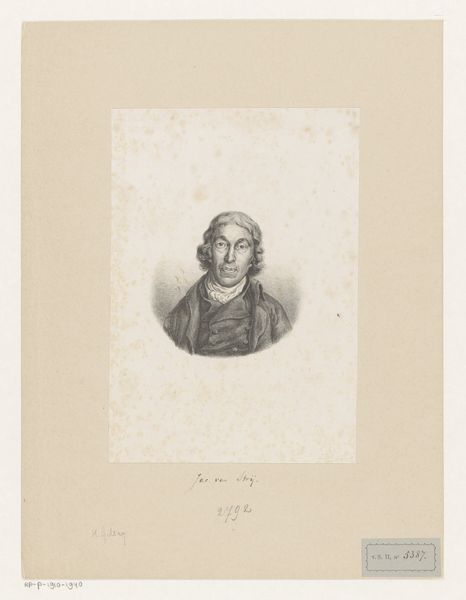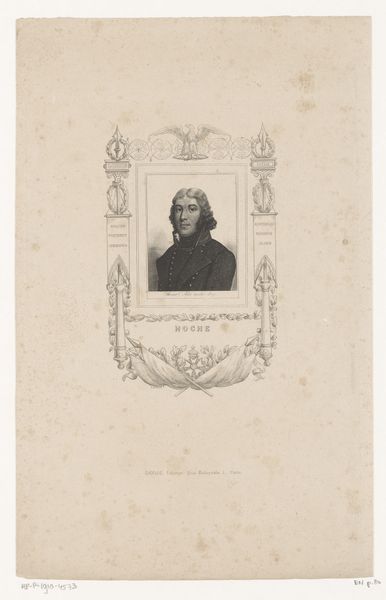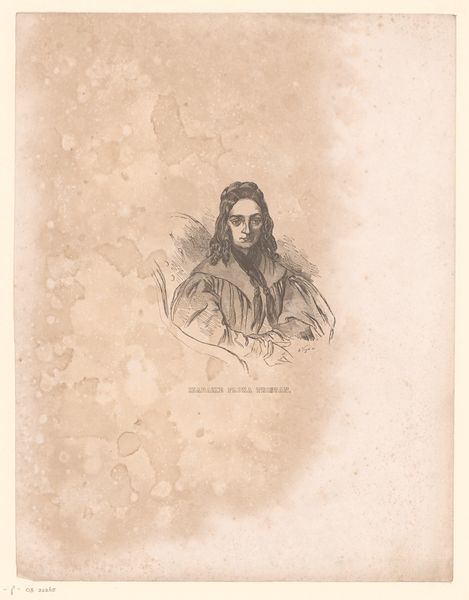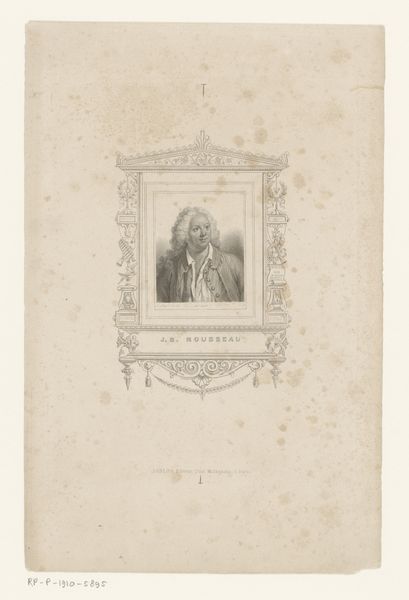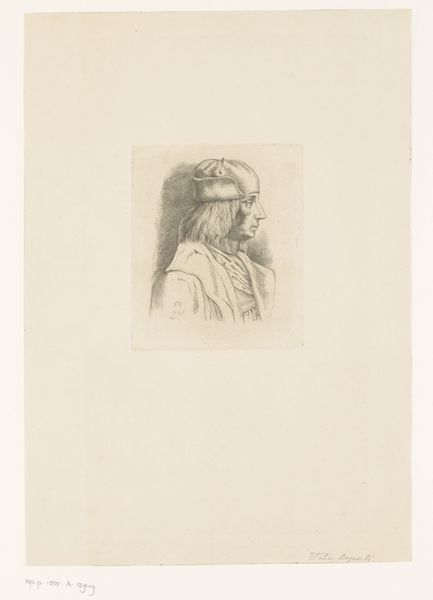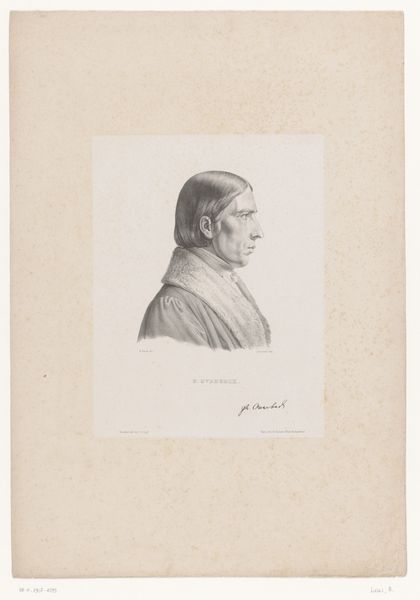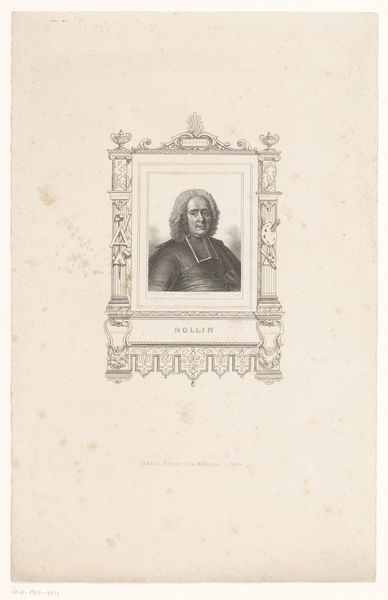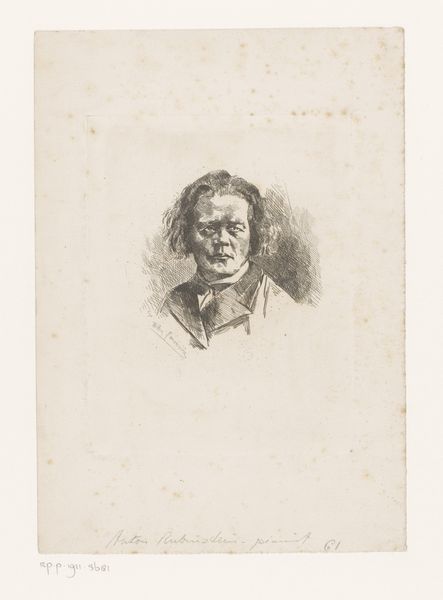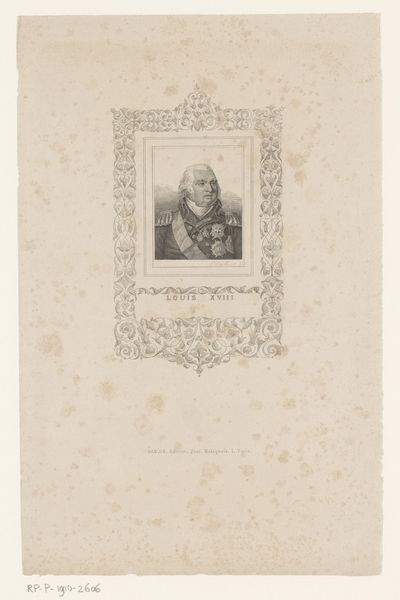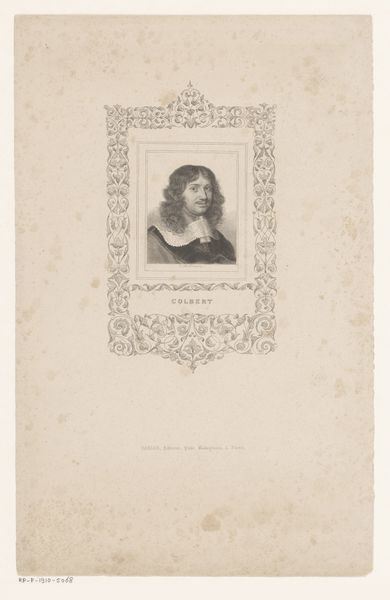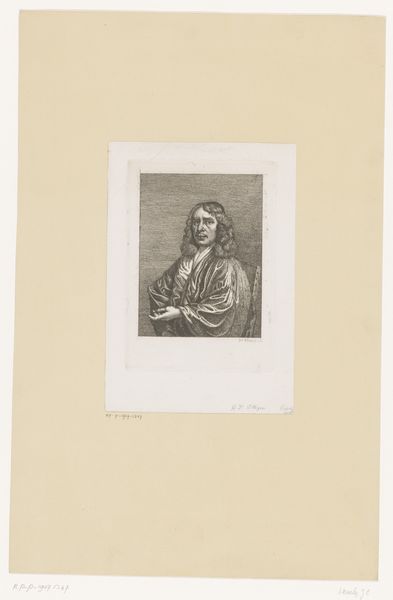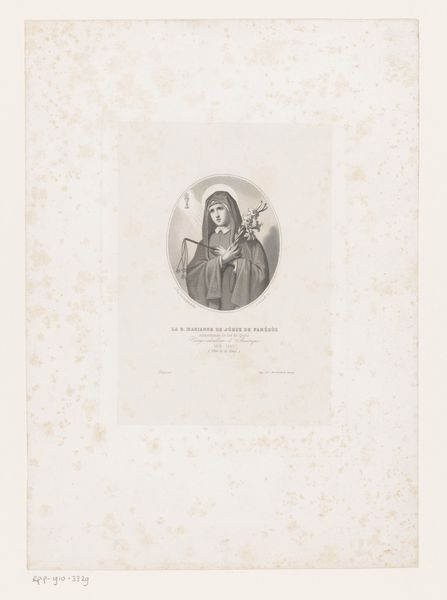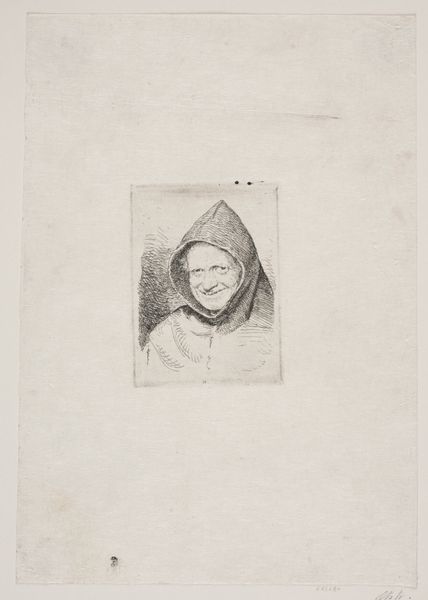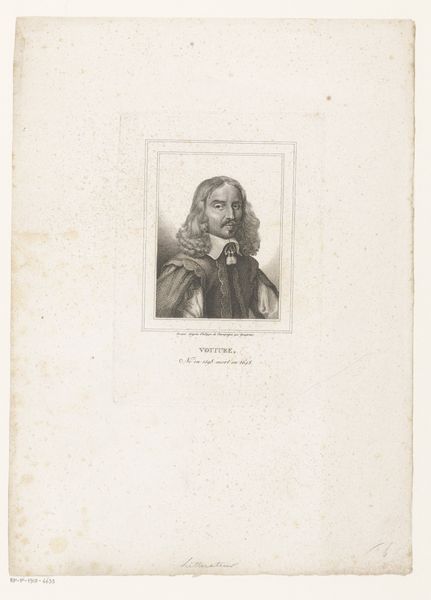
drawing, print, etching, pencil
#
portrait
#
drawing
# print
#
etching
#
pencil sketch
#
pencil
#
academic-art
Dimensions: height 150 mm, width 105 mm
Copyright: Rijks Museum: Open Domain
Curator: This is an etching, a portrait of Nicolaas van Cusa made by Adolphe Varin, dating around 1881 to 1884. It’s rendered with impressive detail considering it's a print. Editor: The immediate effect is quite striking, actually. The tight hatching creates a real sense of texture and almost breathes life into the figure of Cusa; it has a subdued gravity to it. Curator: Etchings, of course, allowed for wider distribution and consumption of imagery. Varin's technical skill is evident, translating tonal variations and surface qualities into lines bitten by acid onto the metal plate. Consider the socio-economic implications: here's an art form, etching, serving to disseminate portraits, contributing to a growing visual culture available to a broader public. Editor: Precisely. It speaks to how power is visualized and conveyed. This image, a portrait of a cardinal, has an embedded connection with theological debates that affected women and men throughout the middle ages. Curator: You're referencing Cusa’s role and status – and this ties directly into material concerns of the church commissioning this kind of work; what was their objective here? The print process here is not unlike other reproductive technologies used in propagating political and religious messaging. Editor: Exactly! It is also relevant to consider that Cusa himself challenged some established perspectives of the Church, even if remaining in a place of privilege. Could this etching, at the remove of centuries, subtly critique authority, or at least invite us to reassess the power dynamics inherent in religious portraiture? How many layers of decisions around materials are involved when creating such images? Curator: Well, that connects to your point; considering it through a contemporary lens of labor practices in the production of art itself - how skilled was Varin; how did that shape the market or its consumption and its role? Editor: And thinking of our current image culture: How different is our mediated connection to the world via screens to how nineteenth-century Europeans visualized power, politics, religion and even knowledge through etchings like this? What forms the image, then and now? Curator: Interesting angles to consider! This piece truly is multifaceted when analyzed both through artistic labor and social context. Editor: Indeed. It provokes many thoughts on production, reproduction, power, and our continuous quest for meaning within social structures.
Comments
No comments
Be the first to comment and join the conversation on the ultimate creative platform.
